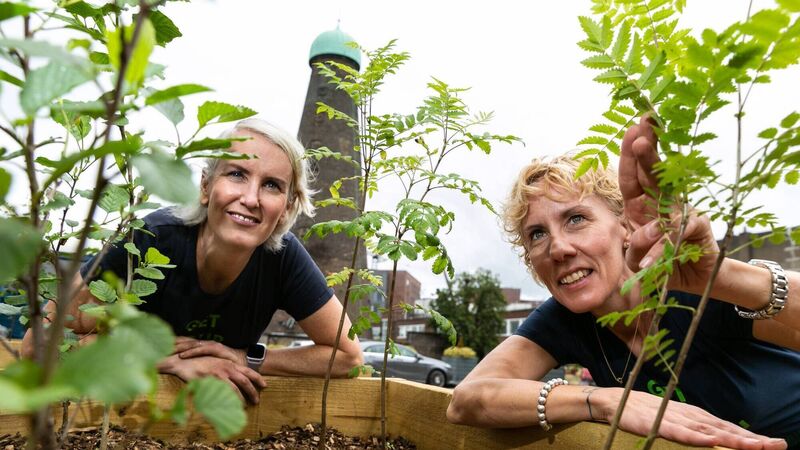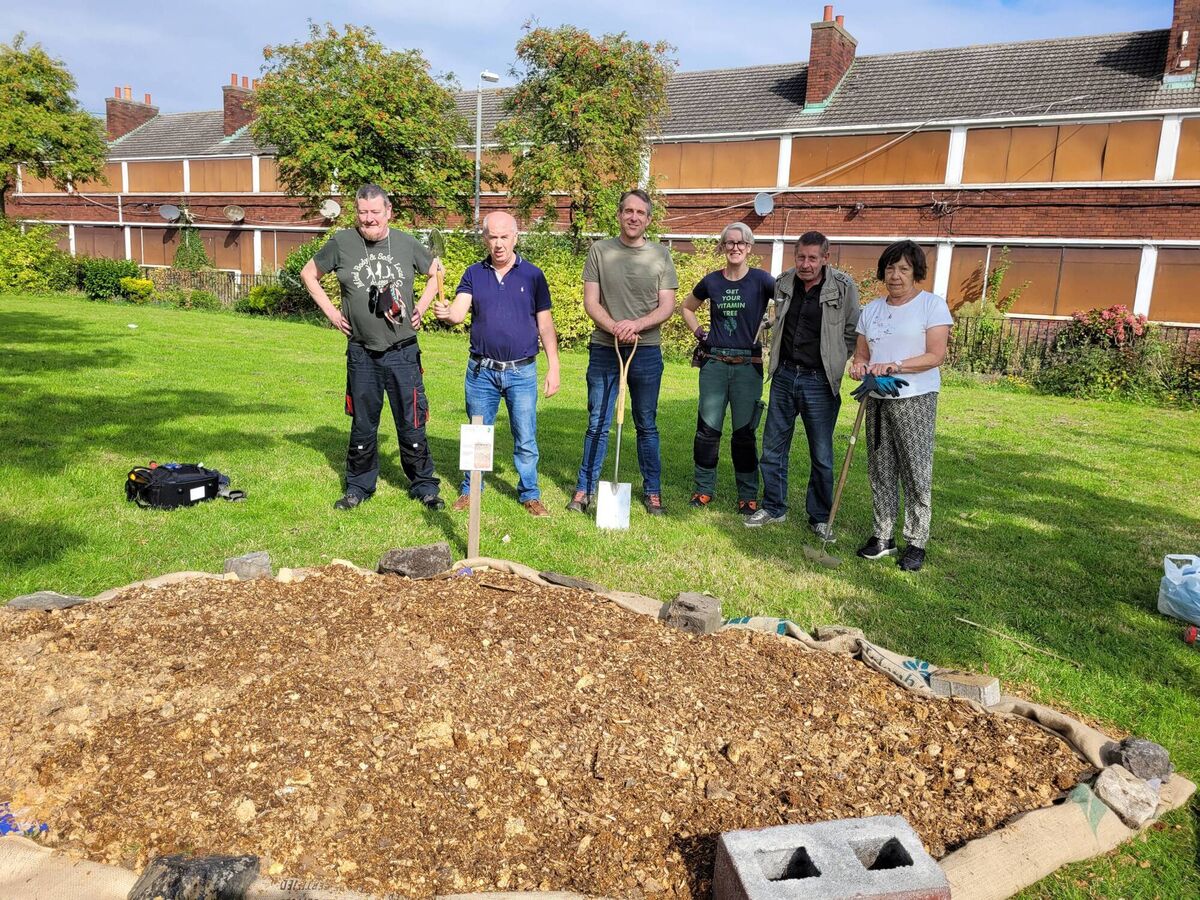Pocket forests can be as small as a single car parking space — would one work in your area?

Pocket Forests: Catherine Cleary and Ashe Conrad-Jones of pocketforests.ie The Digital Hub has partnered with Pocket Forests on a new biodiversity initiative for Dublin 8. Picture: Shane O'Neill, Coalesce.
Pocket Forests is a social enterprise that helps communities to grow small native woodlands in urban areas. Founded by Dublin-based Catherine Cleary and Ashe Conrad-Jones in 2020, to date, Pocket Forests has planted 75 pocket forests, working with 40 different communities around the country.
But one of the most inspiring aspects of their success story is that neither of these social entrepreneurs comes from a horticulture/botany background. Catherine Cleary, an award-winning writer, and Ashe Conrad-Jones, co-founder of an event company, Gorilla Design, decided to take on this completely new challenge to help people make positive change.

Catherine believes planting trees is something we can all do to help create ecosystems on our doorsteps and bring beauty into our cities: “We came across a concept called Tiny Forests during lockdown, in the spring of 2020, and loved it. But we couldn’t find anyone doing it in Dublin.
After thorough research, Catherine and Ashe came up with their own method of planting, inspired by the ‘Tiny Forests’ concept, developed by Japanese botanist Akira Miyawake. Their ‘pocket forests’ recreate a miniature version of a natural woodland, complete with its three layers: a tall tree canopy, a shrub layer and ground cover.
Catherine explains that standalone trees, with bare soil underneath, which we see all the time in parks and gardens, are not a natural state. Trees grow in communities of plants, collaborating with each other.

“Trees need company. A lot of what we talk about to the kids is community and that the trees aren’t competing with each other. They’re actually collaborating. It’s too hard to do this by yourself in a city, so they need each other as much as people do.”
What a nice metaphor for young people!
Pocket Forests is currently working with Change X on a project that will create forests at five schools in the Dublin area. They work with the children to get the ground ready by putting in cardboard and woody material and mulching the ground before planting begins.
“We’re really trying to mimic some of the conditions of a forest floor before the trees are planted. Ideally what we’re trying to do is start an ecosystem. Obviously, that’s work that the natural world does way better than we do. But we know from all the research how to create beneficial conditions for trees.
Pocket Forests uses a permaculture approach to encourage microbes and earthworms to do the heavy work instead of humans with spades. This means people of all abilities and ages can get involved.
The core of a Pocket Forest is the involvement of the local community. Locals help with the soil preparation, planting and maintenance. Because of this, pocket forests hold long-lasting connections to the people who helped to plant them.

“Everything doesn’t have to be neat and tidy, with short-cut grass, and there are a lot of places in urban areas that aren’t particularly useful to people.
"We don’t want to take from playing spaces for kids, but there are a lot of smaller areas that aren’t being used for anything and yet someone is mowing them every week. So those are the perfect places to put pocket forests, because you just get so much bird life, you get so much insect life, even in the first growing season.”
Through the Department of Agriculture’s Woodland Support Fund, this bare-root season will also see 20 small forests being planted in communities and schools around the country.
Some Pocket Forests are as small as a single car parking space, and I think that’s one key to the success of this idea. Planting trees or groups of trees often seems to scare people — either because they think they will be difficult to maintain/control, or create too much shade, or that the roots will cause damage.

Catherine explains: “I think part of this is getting over the fear of planting trees. Our trees are suitable for pruning if you need to keep them small, or if you have the space, they can grow to their full sizes.”
Working together to plant a Pocket Forest reconnects communities with nature, but perhaps more importantly, these inspiring women have shown us how we can all help to change the world, even if it’s one pocket at a time.

WHAT IS...
Biodiversity
...Read more
- Juanita Browne has written a number of wildlife books, including and .







